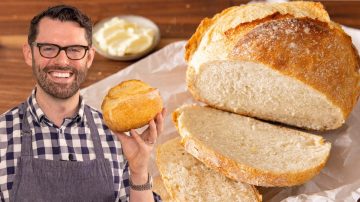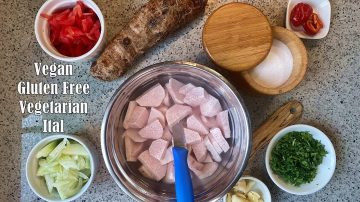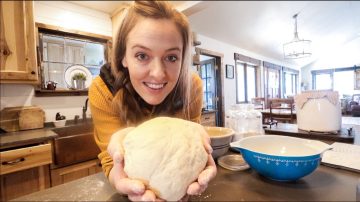The Easiest Actually Good Sourdough Bread
Recipe Overview
Overview
Baking sourdough bread can seem daunting, but Brian Lagerstrom simplifies the process in this engaging recipe. He breaks down each step, starting with the leaven build, which is essential for developing the unique flavors of sourdough. The use of a ripe sourdough starter is emphasized, ensuring that your bread rises beautifully and has that characteristic tangy flavor.
The mixing stage is straightforward, requiring just flour, water, and salt. Brian’s technique of hand mixing, rather than using a stand mixer, allows for a more hands-on approach that many home bakers will appreciate. He also shares tips on gluten development through gentle folding, which is key to achieving the right texture in your loaf.
As the dough ferments, Brian highlights the importance of maintaining the right temperature for optimal fermentation. His advice on using a warm environment, like a turned-off oven, is practical and easy to implement. The shaping and proofing stages are clearly explained, making it accessible for beginners.
Finally, the baking techniques are well-detailed, including the benefits of using a Dutch oven versus a sheet tray. The result is a beautifully risen loaf with a crispy crust and a soft, airy interior. This recipe is not just about making bread; it’s about enjoying the process and the satisfaction of creating something delicious from scratch. Whether you’re a seasoned baker or a novice, this sourdough bread recipe is sure to impress.
Recipe Details
Steps & Tips
Combine 100g of water at 90°F with 25g of ripe sourdough starter and 100g of bread flour, then mix until well combined.
Cover and ferment the leev at room temperature for 12 to 24 hours.
Tip: Feed your sourdough starter twice a day for better vigor.
In a medium mixing bowl, add 275g of 92°F water, then stir in the ripe leevon until dissolved.
Add 400g of bread flour, 50g of whole wheat flour, and 12g of salt, then mix until a dry clump forms.
Use a wet hand to finish mixing the dough by squeezing and folding until homogeneous.
Cover the dough and let it rest for 30 minutes.
Fold the dough by pulling it out and folding it back over itself 5 to 6 times.
Flip the dough over and perform a rounding maneuver to create tension.
Cover the dough and let it bulk ferment in a warm place for 3 hours.
Tip: Use warm water to ensure your dough temperature is between 76 and 80°F.
Tip: Ferment your dough on a wood cutting board to retain heat.
Tip: Invest in proofing baskets if you plan to bake regularly.
Flip the dough onto a lightly floured board, shape it into a boule, and place it seam side up in a floured proofing basket.
Cover the loaf and let it proof for 60 to 90 minutes.
Tip: If the loaf's indent stays indented, it may be over-proofed.
Poke the loaf gently to check if it's ready to bake.
Flip the loaf onto a parchment-lined sheet tray and score the top with scissors.
Spritz the loaf with water to create steam during baking.
Cover with a foil pan lid and bake in a preheated 450°F oven for 15 minutes.
Tip: Using a lid traps steam, which helps the bread rise higher.
Remove the lid and bake uncovered for an additional 20 minutes.
Transfer the loaf to a preheated Dutch oven and bake covered for 15 minutes.
Tip: Dutch ovens provide better crust due to their thermal mass.
Bake uncovered for another 25 minutes.
Remove the loaf from the oven and let it cool before slicing.
Ingredients
Ingredient: Gluten
→ Substitution: Gluten-Free Flour Blend
Nutrition
Skill Level
Frequently asked questions
Below you will find answers to the most common questions about this recipe.
Got a Recipe Question? Ask Away!
Interesting Tidbits
- •Sourdough bread is made using a natural leavening process, which involves wild yeast and bacteria.
- •The leaven is a mixture of flour, water, and a small amount of sourdough starter that ferments to create gas.
- •Proper dough temperature is crucial for fermentation; it should be around 76°F to 80°F for optimal results.
- •Using a Dutch oven for baking sourdough helps create a crispy crust by trapping steam.





























